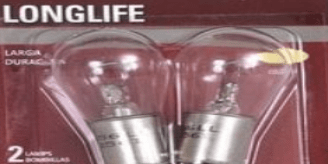October 11, 2022

Client:
International Automotive Lighting Brand
Situation/Challenge:
One of the world’s largest automotive lighting brands had been experiencing severe supply chain and labor force disruptions during the COVID-19 pandemic. As if the pandemic itself and the business disruptions it caused weren’t stressful enough, the brand’s retail demand skyrocketed during that same time period and they were unable to keep up with the growing demand due to those factors. Their sole U.S. blister packaging facility was maxed out in terms of capacity and there wasn’t much light at the end of the tunnel in the fall of 2021 when the world was starting to return to some sense of normalcy.
The backlogged demand and internal capacity constraints forced the brand to do something they had never done before; look to outsource a portion of their blister packaging production to dig their way out of the backlog and capitalize on the high demand for their products. That is when Case Mason came into the fold.
Response:
Being in business for almost 50 years and possessing over 25 years of experience in blister packaging, Case Mason has developed relationships with many blister and blister card suppliers. One of those suppliers just so happens to supply this particular automotive lighting brand with its packaging materials. At the recommendation of the supplier, a Zoom call was arranged between the three companies. Time was of the essence for the brand, so they did not waste any time sharing all of the relevant production process, volume, QA, and logistics information. The initial call went well and there were a handful of additional follow-up calls over the next few days to iron out all of the brand’s expectations and Case Mason’s pricing details. Case Mason committed to meeting daily, weekly, and monthly volume demands and the two companies were able to agree on pricing.
Outcome:
Within about two weeks of the initial Zoom call, there was an agreement in place and materials were en route to Case Mason’s facility in Baltimore. Case Mason purchased an additional 8-station Alloyd machine to ensure that the production demands would be met and more capacity would be available if the need were to arise. Case Mason assembled a dedicated crew of one lead engineer to maximize the blister machines’ mechanical abilities, one production lead to manage production and QA functions, and a team of diligent line workers to provide the cohesiveness needed to pull off a project of such a large scale.
There was an initial ramp-up period during the first week of production, as there is with any new project, let alone one of this size that materialized over such a short time span. Once the initial learning curve was overcome, Case Mason was off to the races. The brand did an excellent job of keeping raw materials flowing in at the same time as finished goods were going out the door, and that allowed for consistent production over a four-month span. In total, 4,695,047 blister packs were produced over that period.
The combined production effort between the brand’s internal facility and Case Mason resulted in supply eventually catching up to the market’s demand, which was the ideal end goal all along. The overall experience was a prime example of what true partnership can result in when both sides are fully transparent and determined to find a solution to a particular problem.
